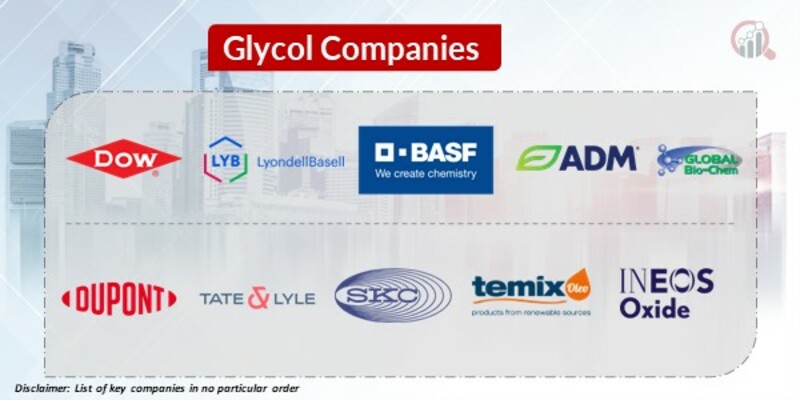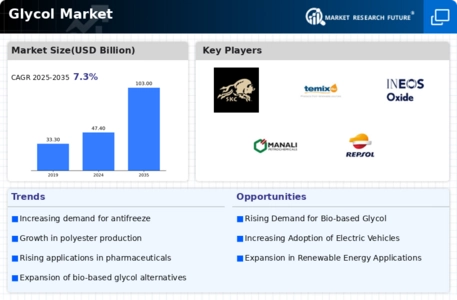Top Industry Leaders in the Glycol Market

The global glycol market is a dynamic tapestry woven with established giants, nimble startups, and the intricate threads of various strategies, market forces, and evolving trends. Exploring the competitive landscape, key players, their winning strategies, and the latest developments shaping the market.
Market Share: A Balancing Act on a Seesaw of Factors
- Product Mix: Diversifying beyond dominant glycol types like ethylene glycol (EG) and propylene glycol (PG) into niche areas like triethylene glycol (TEG) is a winning strategy. Companies like Shell and BASF are leading the charge, catering to specific industry needs.
- Geographic Focus: Establishing strong regional footholds is crucial. Dow Chemical boasts a robust North American presence, while Sinopec dominates the Asian market. Regional expansion through acquisitions and partnerships is a common tactic.
- Cost Optimization: Streamlining production, optimizing logistics, and leveraging economies of scale are key to staying competitive. LyondellBasell's integrated production facilities are a prime example.
- Sustainable Innovations: Embracing bio-based glycols and renewable energy sources like wind and solar for production is gaining traction. Cargill and Archer Daniels Midland are front-runners in this movement, catering to rising sustainability demands.
Strategies: The Weapons in the Competitive Arsenal
- Product Differentiation: Dow's high-purity PG for pharmaceuticals and BASF's eco-friendly EG demonstrate how specialization can create a unique selling proposition.
- Vertical Integration: Controlling the entire supply chain, from feedstock to finished product, offers greater control and cost advantages. China National Petroleum Corporation (CNPC) exemplifies this approach.
- Branding and Customer Service: Building strong brand recognition and prioritizing customer satisfaction are essential. Ashland's technical support and product customization services illustrate this commitment.
- Strategic Partnerships: Collaborating with research institutions, technology providers, and industry players fosters innovation and opens new market avenues. Dow's partnership with LanzaTech on bio-based EG production is a prime example.
List of Key Players in the Glycol Market
- Dow
- LyondellBasell Industries N.V.
- BASF SE
- ADM
- Global Bio-chem Technology Group Company Limited
- DuPont Tate & Lyle Bio Products
- SKC
- Temix Oleo
- INEOS Oxide
- Huntsman International LLC
- ADEKA CORPORATION
- Chaoyang Chemicals, Inc.
- Manali Petrochemicals Limited
- Haike Chemical Group Co., Ltd.
- Arch Chemicals Inc.
- Repsol
Recent Developments:
August 2023: Dow Chemical announces a $1.5 billion expansion of its EG production capacity in Texas, aiming to capitalize on rising demand from the automotive and construction sectors.
September 2023: BASF partners with a Chinese bio-based chemical company to explore bio-based PG production, tapping into the growing demand for sustainable alternatives.
October 2023: The global PG market witnesses a price surge due to supply chain disruptions caused by a hurricane in the US, highlighting the market's vulnerability to external factors.
November 2023: The European Union imposes stricter regulations on EG emissions, prompting manufacturers to adopt cleaner production technologies, impacting production costs and potentially shifting market dynamics.
December 2023: The overall glycol market growth slows down due to global economic slowdown and inflation, prompting players to focus on cost optimization and strategic partnerships.

